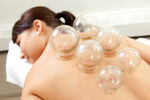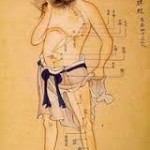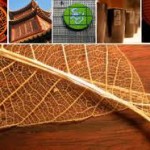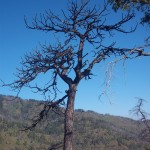Blue Valley Acupuncture Clinic-Located in Dayton, WA.-serving greater Walla Walla area & nearby towns.
Mental Well-being and Acupuncture

Article attributed to HealthCMI
One of the most rewarding aspects of being a licensed acupuncturist is to deliver fast clinical results that directly improves the life of the patient. Acupuncture for the treatment of panic attacks is one of the more dramatic treatment protocols because of the immediate impact it has on patients’ lives. Often, from the time of the very first acupuncture treatment, the patient has a decrease in the frequency, intensity and duration of panic attacks. As the process continues, patients gain a greater sense of well-being, centeredness, self-confidence and control over their lives.
I remember treating a Vietnam veteran about ten years ago. Decades after his extreme combat experiences, he had never slept more than two complete hours consecutively. The stress, exhaustion and mental restlessness had withered this man to a shell of what he once was. Psychologically, he had made peace wit his past. Physiologically, however, his body and brain chemistry had suffered from post traumatic stress syndrome (PTSD) and he was unable to fully recover from the impact of his experiences.
After the first acupuncture treatment he was able to sleep up to about four hours per night. After a few weeks of acupuncture, his sleep pattern normalized. He no longer experienced panic attacks and no longer woke up covered in sweat from nightmares. He came in to my office for routine checkups until he felt fully recovered. It was incredible to see his face change. The stress fell from his eyes and cheeks. His complexion returned. His wooden exterior softened into that of a happy man. Eventually, he fell in love and got married.
Most panic attack patients at my clinic tend to be hard working individuals with very busy schedules. Everyday stresses in the workplace combined with family and relationship struggles tend to build up in the system until the psyche breaks. Combine some of the aforementioned issues with lack of time for reflection and rest, financial struggles and maybe a lack of community support and the average person may see the emergence of panic attacks. Here, Liver Qi Stagnation has the opportunity to turn into Liver Fire. It may also create a cycle of Liver Qi depression with either Yang Uprising or excess Fire. Naturally, the Heart Shen is poorly nourished as the Liver Yin is depleted. The Qi, Blood, Yin and Yang may be depleted and the consequent stagnation and lack of Yin essence may also create excess Fire. In some cases, Heat in the Blood may develop along with its associated bleeding disorders. Abnormal uterine bleeding and sensory organ disorders are not uncommon in these circumstances.
It’s amazing what a simple release can do for one’s spirit. In some instances, acupuncture is akin to releasing pressurized steam from a tea kettle. Patients with extremely high stress loads may spurt a high pressure mist of blood that emanates from Yin Tang when the needle is removed. It reminds me of an aerosol spray. I usually let my patients know they can expect significant clinical results and a good night’s sleep if I see this release, especially when combined with a release of blood from ear Shenmen when the needle is removed. Naturally, an acupuncturist can analyse the color of the blood released from ear Shenmen to make a more detailed diagnosis.
Common body acupuncture points for the treatment of panic attacks are P7, P6, TB5, HT7, LI11, Sishencong, Yintang, LR3, DU20 and ST44. Nourishing points for patients with panic attacks often include ST36, SP6, K3, and K7. Auricular points vary dependent upon the system used, however, ear Liver, Kidney, Heart, Brain, Sympathetic and Shenmen are common amoung the standard auricular points. In patients prone to depression, using DU24 with a triple side-by-side technique combined with the Chouqi technique simultaneouly on all three points helps to direct the healthy energy upwards while releasing stagnation from the mind and Shen. In all, an acupuncturist simply needs to stick with a classical differential diagnosis to ensure that the upward and descending movement Qi becomes balanced. Some will need strong tonification while many will need better invigoration and circulation of Qi and Blood.
Heavy sedation acupuncture points are often necessary in acute cases wherein the patient may have difficulty in maintaining sanity or composure. This is more common in patients with schizophrenia. Often, acupuncture can reduce a multitude of voices inside the head of the patient to a singular identity during the treatment. I can’t help but have compassion for these individuals. They often feel like they are living in a crowded room of voices and cannot discern their own. Although acupuncture brings significant and immediate results, the acupuncture is useless without tremendous family or community support. For patients suffering from schizophrenia, regularity and discipline are difficult. They fall from their medication regimes and acupuncture treatment schedules. They often engage in behaviors such as staying out late and losing sleep combined with a poor diet. It’s a big job to help these people. Resolving panic attacks for the average patient is straightforward and rapid, however, for patients with schizophrenia this process may be ineffective due to lack of follow through on the patient’s behalf.
Patients suffering from depression and diabetes are another challenge. In both cases, they will respond more slowly to treatment for most disorders. If a patient suffers from both disorders simultaneously, it presents significant clinical challenges. Results will probably come about more slowly. Also, significant attention must be devoted to restoring the patient’s insulin-glucagon pathway. Mental instability due to blood glucose level fluctuations exacerbates the recovery process. Even so, patients with depression and diabetes will usually see resolution of their panic attacks in a timely fashion with the disciplined application of acupuncture care.
– See more at: http://www.healthcmi.com/Acupuncture-Blog/723-panicattacksshenmen#sthash.iLatrww9.dpuf


 Acupuncture may be helpful in treating migraines, arthritis and chronic pain.
Acupuncture may be helpful in treating migraines, arthritis and chronic pain.










